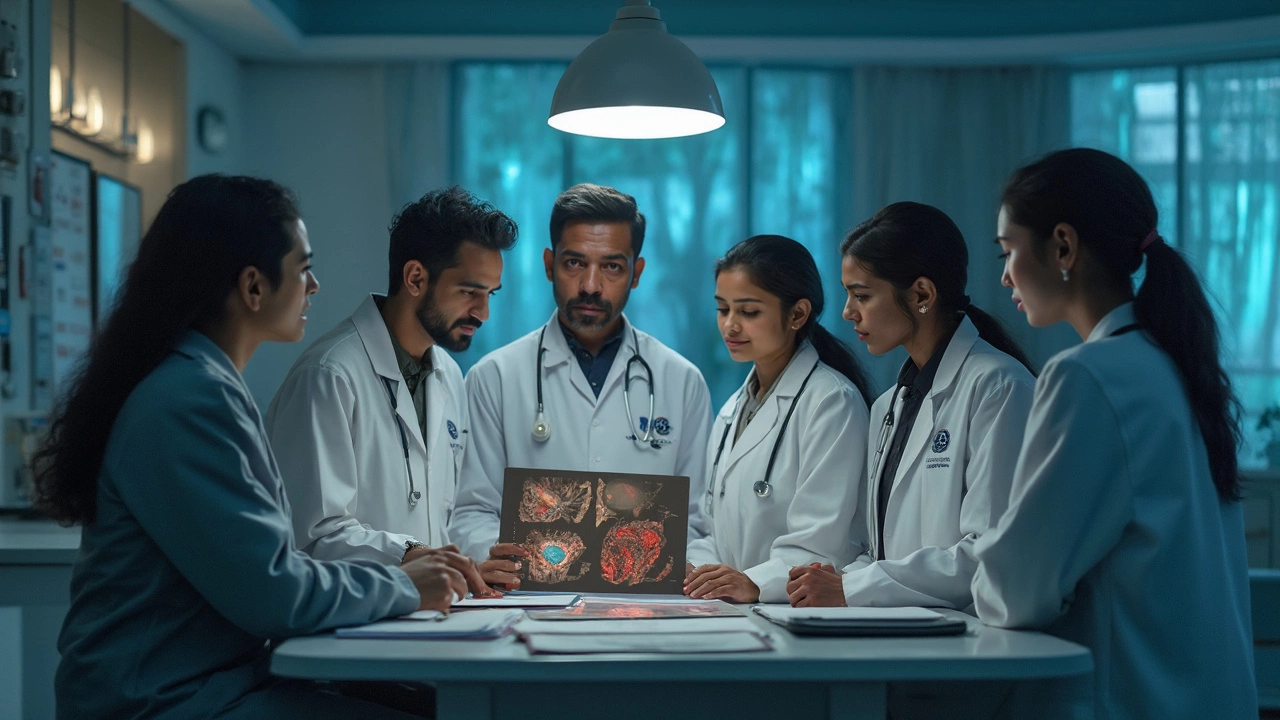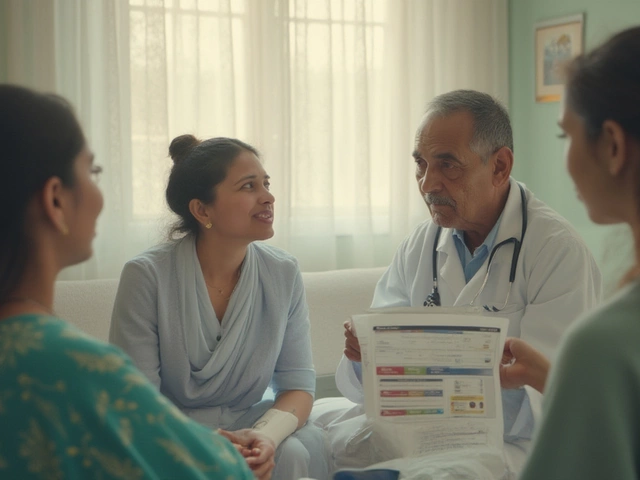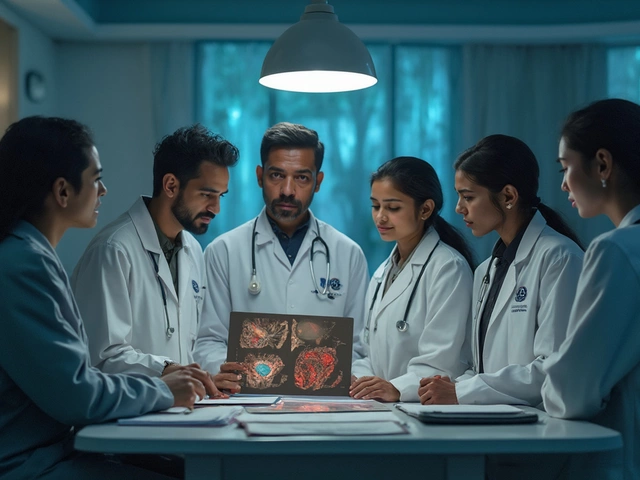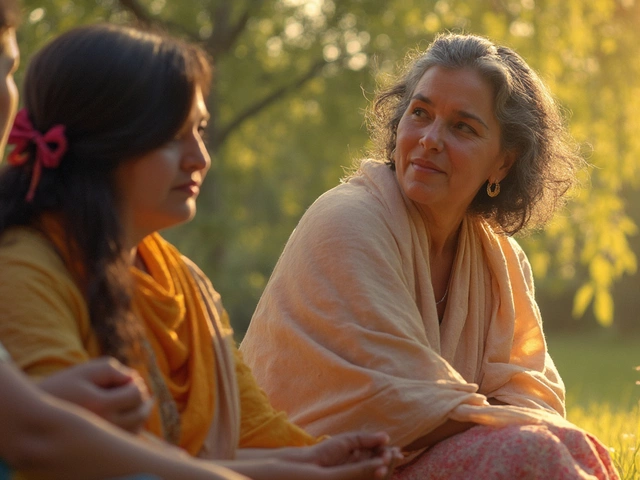You hear it all the time—catching cancer early is key. But what happens when cancer goes past that line where it can't be cured? This question isn't just for doctors or medical journals. It's something real people and families have to face every day, often without clear answers.
Here’s the straight-up truth: cancer isn’t black or white. It’s not always curable or not. A lot depends on where the cancer started, how far it’s spread, and what kind of treatment is possible right now. Sometimes, you might hear doctors use words like 'treatable' or 'manageable' instead of 'curable.' That can be frustrating and scary, but it points to how complicated the situation can be.
Some cancers are nearly impossible to beat once they’ve spread to distant organs—like stage 4 pancreatic cancer. Others, like some types of leukemia, have seen huge turnarounds with new drugs, even after the disease seems to grip tight. So, yes, the details matter a lot—and the line between curable and incurable is moving all the time.
- When Is Cancer Considered Curable?
- How Stage and Spread Change the Outlook
- What Happens When Cancer Isn’t Curable?
- New Treatments That Move the Needle
- Tips for Facing Incurable Cancer News
When Is Cancer Considered Curable?
Doctors throw around the word "curable" a lot, but what does it really mean when it comes to cancer? At its core, cancer is considered curable when treatment can destroy all cancer cells, so the disease never returns. For real-world cases, this usually means you pass a certain number of years after treatment—typically five—without any signs of the cancer coming back.
Being "curable" comes down to a mix of things: where the cancer started, how big it is, whether it’s moved to other parts of the body, and how your body responds to treatments. Early-stage cancers that haven’t spread are the likeliest to be wiped out for good. Cancer like testicular cancer or certain breast cancers found early have cure rates over 90%.
Here’s the catch: even if a doctor says "you're cured," nobody can guarantee every single cell is gone. That's why they use stats to talk about "5-year survival rates." If someone stays cancer-free for five years after treatment, the chances of cancer returning drop a lot.
| Cancer Type | Stage (at Diagnosis) | 5-Year Survival Rate (%) |
|---|---|---|
| Testicular (early) | Local | 98-99 |
| Breast (early) | Stage I | 99 |
| Lung (early) | Stage I | 68-92 |
| Colon (late) | Stage IV | 15 |
This table shows why early detection is a gamechanger. If doctors catch the cancer when it’s local, many people have a shot at being totally cured. When it spreads, those chances plummet fast.
Doctors also look at how well your body handles treatment. Some folks have tough-to-treat cancers that respond great to a new drug, others don’t. It’s a mix of luck, genetics, and medical options on the table. If you’re facing a diagnosis, always ask if your cancer is considered "curable" based on its type and stage, and what that really means for you in day-to-day life.
How Stage and Spread Change the Outlook
This is where things get real. The stage of cancer is probably the biggest factor doctors use to figure out if it can be cured—or not. Put simply, the 'stage' is just a way to describe how big the cancer is and where it’s gone in the body. Earlier stages usually mean better chances for a cure, but once cancer has spread to far-off areas (what doctors call 'metastasized'), things get a lot tougher.
Here’s what you need to know about stages:
- Stage 0 or I: The cancer is tiny and hasn’t gone anywhere. Surgery or a targeted treatment can often wipe it out for good.
- Stage II or III: The cancer is bigger or has moved into nearby tissues or lymph nodes, but it hasn’t gone far. Treatment can still work, but it’s more complicated.
- Stage IV: This is when the cancer has spread to distant parts of the body, like the lungs, liver, or brain. At this point, the chance of a cure drops way down. Most of the time, doctors focus on controlling the cancer and giving people more time.
Different cancers have different rules. For example, a stage 4 testicular cancer might be curable, while stage 4 pancreatic cancer almost never is. Here’s a quick look at five-year survival rates by stage for a few common cancers:
| Cancer Type | Stage I Survival (%) | Stage IV Survival (%) |
|---|---|---|
| Breast | 99 | 30 |
| Lung | 65 | 7 |
| Colon | 91 | 15 |
| Pancreatic | 39 | 3 |
| Melanoma (skin) | 99 | 30 |
These numbers are averages—not guarantees. But they show why catching cancer early matters. Once it spreads, the options shift from 'How do we get rid of this?' to 'How do we manage it and help you live longer and better?'
Here’s a tip if you or someone you know is going through this: always ask doctors about the exact stage and what that means for treatment options. Don’t settle for vague answers. Knowing the stage helps you decide what to do next.

What Happens When Cancer Isn’t Curable?
When you hear that a cancer isn’t curable, it doesn’t mean nothing can be done. It just means doctors can’t get rid of every single cancer cell or guarantee it won’t come back. Still, there’s a big difference between incurable and untreatable. Most of the time, there are solid treatment options to help control symptoms, shrink tumors, and maybe even slow things down for months—sometimes years.
Here’s what usually changes:
- Goal of Treatment Shifts: Instead of going for a cure, doctors focus on controlling the cancer, shrinking it, or just keeping you comfortable.
- Types of Treatment Vary: You might still get chemo, immunotherapy, or targeted drugs—but the aim is to help you live longer and feel better, not wipe the cancer out completely.
- Palliative Care Enters the Scene: This isn’t just end-of-life care. It’s about managing pain, nausea, or stress from the disease and treatments. Many people keep working, traveling, or enjoying life while receiving palliative care.
For some, cancer turns into something you live with—more like a chronic disease than an instant death sentence. There are folks living with stage 4 breast or prostate cancer for a decade or more because of newer medicines. On the flip side, some cancers don’t respond well, and decisions focus on comfort and quality of life instead of more aggressive treatment.
Let’s look at what this means in numbers. Here’s a quick comparison for some advanced cancers and typical survival times, though it can vary a lot by person and by new treatments coming out every year:
| Cancer Type (Stage 4) | Typical Median Survival (Years) |
|---|---|
| Pancreatic | Less than 1 |
| Colorectal | 2-3 |
| Lung (non-small cell) | 1-2 |
| Breast | 3-5+ |
| Prostate | 5+ |
These numbers only tell part of the story. Some people outlive these stats by a lot, others by less—it depends on the exact cancer, age, other health issues, and treatments available. Many people find that, even after hearing ‘incurable,’ they still have a say in what comes next. Talking honestly with your care team, asking about your options, and getting support early can help you make the most of the time you have.
New Treatments That Move the Needle
The old storyline around cancer was mostly surgery, radiation, or the usual chemo routines. But today, things look a lot different. Researchers are rolling out new therapies that sometimes change what it means for cancer to be called incurable. These therapies have bought precious time for some and even forced docs to rethink what they told people about their odds.
Immunotherapy stands out. Instead of blasting every fast-growing cell, these drugs wake up your immune system to fight cancer cells directly. A good example? Pembrolizumab (sold as Keytruda) changed the way doctors treat certain lung, skin, and even some head and neck cancers. Folks who used to be told they were out of luck sometimes live years longer than expected—some even reaching long-term remission.
Targeted therapies are another game-changer. These medicines don't just attack all cells; they lock in on unique features on cancer cells—like a special protein gone haywire. For example, in some breast cancers with a HER2 mutation, drugs like trastuzumab (Herceptin) have made a night-and-day difference. In fact, survival rates for HER2-positive breast cancer have almost doubled since these drugs came out.
Here’s a quick look at how some of these new treatments are changing outcomes, especially when the old-school treatments didn’t give much hope:
| Type of Cancer | Old Median Survival (Years) | New Median Survival (Years) | Breakthrough Treatment |
|---|---|---|---|
| Advanced Melanoma | 0.7 | 5+ (with immunotherapy) | Immunotherapy (Keytruda, Opdivo) |
| HER2+ Breast Cancer | 2.0 | 4.8 | Targeted Therapy (Herceptin) |
| Certain Leukemias | 3 | 10+ | Targeted Therapy (Imatinib) |
Some new treatments, like CAR-T cell therapy, actually modify your own immune cells in the lab and put them back in your body to hunt down cancer. It sounds wild—and it kind of is. It’s given hope to kids with hard-to-treat leukemia and adults with tough blood cancers.
But don’t get it twisted—these aren’t magic bullets for everyone. Even the best new drugs don’t always work, side effects can be no joke, and sometimes the cost is sky-high. Still, every year, these new directions give real hope to people hit with the worst news. If you're facing advanced cancer, it’s worth asking your doctor about clinical trials or the newest approved meds—they might just help spin your story in a way a decade ago was totally unheard of.

Tips for Facing Incurable Cancer News
Hearing that cancer isn't curable knocks the wind out of anyone. It's a moment that feels unfair and confusing—there's no quick way to process it. But there are things you can do that actually help you get your bearings back, even when you’re facing one of life’s toughest challenges.
First, get clear answers. Ask your doctor to break down exactly what this means for your type of cancer. There’s a big difference between 'incurable' and 'untreatable.' Many people with incurable cancer still live for years, using ongoing treatments to control symptoms and slow growth. If you don’t get what your doctor is saying, ask again. You deserve honest answers about your options and likely outcomes.
Second, know that you can steer some of your own care. There’s something called palliative care—it’s not just for the last days of life. In fact, early palliative care for people with cancer has been proven in studies (like a well-known 2010 NEJM lung cancer trial) to improve quality of life and even sometimes help people live longer. This care focuses on tackling pain, stress, and side effects, not just treating the cancer itself.
Third, involve your close circle. You shouldn’t have to handle this news solo. Whether you’re someone who likes small talks with friends, a sit-down with your partner, or even joining an online group (Cancer Support Community or even a local Facebook group), sharing the emotional load makes a difference.
- Make a list of questions as they pop up—bring them to appointments.
- Get second opinions—sometimes, a new team or center knows of a clinical trial you didn’t hear about.
- Talk openly about your wishes with loved ones. It may feel awkward but gives you more control and can actually bring peace of mind.
- Stay on top of paperwork: sort out advanced directives, powers of attorney, and whatever gives your people clarity.
Most folks find at least one thing that makes their days better—gardening, reading, going for a walk, or even playing with a pet. These aren’t just distractions; they’re ways to remind yourself you’re still you, not just a diagnosis.
Keep seeking information from reliable places (not just random YouTube advice). Ask your team about new treatments, new trials, and what to expect next—medicine advances fast. It’s your right to know about all your options, even if the road is tough.








